What Kind of Math Is on the ACT Test?
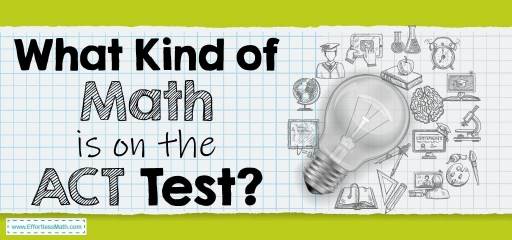
ACT (the American College Testing Organization) is a standardized test that aims to assess students’ academic ability to be admitted to United States universities. The test is administered by a non-profit organization of the same name (ACT). The ACT was first introduced in November 1959 as a competitor to the SAT. ACT has since seen a gradual increase in the number of test-takers.
The ACT consists of four main sections: English, Reading, Mathematics, and Science. The ACT also includes an optional 40-minute Writing Test.
The math section of the ACT consists of 60 multiple-choice questions that test takers have 60 minutes to answer. Test takers are also allowed to use personal calculators in the test math section.
Exam materials in the ACT Math section include the following:
- Pre-Algebra
- Elementary Algebra
- Intermediate Algebra
- Coordinate Geometry
- Plane Geometry
- Trigonometry
The Absolute Best Book to Ace the ACT Math Test
lock-heading”>Coordinate Geometry
Coordinate Geometry questions are about topics such as slope, distance, midpoint, parallel and perpendicular lines, points of intersection, and graphing. In this section, you should have information about basic graphing and finding points on the x-axis of, coordinate graph.
Trigonometry
Trigonometry questions are very basic, which include trigonometric ratios and basic trigonometric identities. The basic functions of sine, cosine, and tangent are some of the topics in this section.
| math sections | topics | Numer of Questions | |
| #1 | Pre-Algebra | Adding and Subtracting Integers, Multiplying and Dividing Integers, Order of Operations, Ordering Integers and Numbers, Integers and Absolute Value, Simplifying Fractions, Adding and Subtracting Fractions, Multiplying and Dividing Fractions, Adding Mixed Numbers, Subtracting Mixed Numbers, Multiplying and Dividing Mixed Numbers, Dividing Mixed Numbers, Adding and Subtracting Decimals, Multiplying and Dividing Decimals, Comparing Decimals, Rounding Decimals, Factoring Numbers, Greatest Common Factor, Least Common Multiple | 14 |
| #2 | Elementary Algebra | One-Step Equations, Multi-Step Equations, Graphing Single–Variable Inequalities, One-Step Inequalities, Multi-Step Inequalities, Systems of Equations, Simplifying Ratios, Proportional Ratios, Similarity and Ratios, Percentage Calculations, Percent Problems, Discount, Tax and Tip, Percent of Increase and Decrease Simple Interest | 10 |
| #3 | Intermediate Algebra | Solving a Quadratic Equation, Graphing Quadratic Functions Solving Quadratic Inequalities, Graphing Quadratic Inequalities, Properties of Logarithms, Evaluating Logarithms, Natural Logarithms, Solving Logarithmic Equations, Adding and Subtracting Matrices, Matrix Multiplication, Multiplication Property of Exponents, Division Property of Exponents, Zero and Negative Exponents, Powers of Products and Quotients, Negative Exponents and Negative Bases, Scientific Notation, Radicals |
9 |
| #4 | Plane Geometry | Pythagorean Theorem, Triangles, Polygons, Trapezoids, Circles, Cubes, Rectangular Prism, Cylinder | 14 |
| #5 | Coordinate Geometry | One-Step Equations, Multi-Step Equations, Graphing Single–Variable Inequalities, One-Step Inequalities, Multi-Step Inequalities, Systems of Equations, Simplifying Ratios, Proportional Ratios, Similarity and Ratios, Percentage Calculations, Percent Problems, Discount, Tax and Tip, Percent of Increase and Decrease, Simple Interest | 9 |
| #6 | Trigonometry | Trig Ratios of General Angles, Coterminal Angles and Reference Angles, Angles and Angle Measure, Evaluating Trigonometric Function, Missing Sides and Angles of a Right Triangle, Arc Length and Sector Area | 4 |
Best ACT Math Prep Resource for 2026
Complete List of ACT Math Topics
Fractions and Decimals
- Simplifying Fractions
- Adding and Subtracting Fractions
- Multiplying and Dividing Fractions
- Adding Mixed Numbers
- Subtracting Mixed Numbers
- Multiplying Mixed Numbers
- Dividing Mixed Numbers
- Adding and Subtracting Decimals
- Multiplying and Dividing Decimals
- Comparing Decimals
- Rounding Decimals
- Factoring Numbers
- Greatest Common Factor
- Least Common Multiple
Real Numbers and Integers
- Adding and Subtracting Integers
- Multiplying and Dividing Integers
- Order of Operations
- Ordering Integers and Numbers
- Integers and Absolute Value
Proportions, Ratios, and Percentages
- Simplifying Ratios
- Proportional Ratios
- Similarity and Ratios
- Percentage Calculations
- Percent Problems
- Discount, Tax and Tip
- Percent of Increase and Decrease
- Simple Interest
Algebraic Expressions
- Simplifying Variable Expressions
- Simplifying Polynomial Expressions
- Translate Phrases into an Algebraic Statement
- The Distributive Property
- Evaluating One Variable Expressions
- Evaluating Two Variables Expressions
- Combining like Terms
Equations and Inequalities
- One-Step Equations
- Multi-Step Equations
- Graphing Single–Variable Inequalities
- One-Step Inequalities
- Multi-Step Inequalities
- Systems of Equations
Linear Functions
- Finding Slope
- Graphing Lines Using Standard Form
- Graphing Lines Using Slope-Intercept Form
- Writing Linear Equations
- Graphing Linear Inequalities
- Finding Midpoint
- Finding Distance of Two Points
Exponents and Radicals
- Multiplication Property of Exponents
- Division Property of Exponents
- Zero and Negative Exponents
- Powers of Products and Quotients
- Negative Exponents and Negative Bases
- Scientific Notation
- Radicals
Polynomials
- Writing Polynomials in Standard Form
- Simplifying Polynomials
- Adding and Subtracting Polynomials
- Multiplying Monomials
- Multiplying and Dividing Monomials
- Multiplying a Polynomial and a Monomial
- Multiplying Binomials
- Factoring Trinomials
- Operations with Polynomials
Geometry and Solid Figures
Statistics and Probability
- Mean, Median, Mode, and Range
- Histograms
- Pie Graph
- Probability Problems
- Combinations and Permutations
Functions
- Function Notation
- Adding and Subtracting Functions
- Multiplying and Dividing Functions
- Composition of Functions
Quadratic
- Solving a Quadratic Equation
- Graphing Quadratic Functions
- Solving Quadratic Inequalities
- Graphing Quadratic Inequalities
Matrices
Logarithms
Complex Numbers
- Adding and Subtracting Complex Numbers
- Multiplying and Dividing Complex Numbers
- Rationalizing Imaginary Denominators
Trigonometric Functions
- Trig Ratios of General Angles
- Coterminal Angles and Reference Angles
- Angles and Angle Measure
- Evaluating Trigonometric Function
- Missing Sides and Angles of a Right Triangle
- Arc Length and Sector Area
The Best ACT Quick Study Guide:
FAQs:
Is the ACT or SAT math harder?
The answer to this question is up to you. Neither test is harder than the other, but some test takers may find one test harder than the other.
How do I study for the ACT Math?
How you prepare for the ACT Math test is very important. You should use the best prep books to help you prepare well for the ACT Math test. You can also use online practice tests for further practice after studying the ACT exam concepts.
How is the ACT Test Scored?
In the ACT, each subject area is given a scaled score between 1 and 36. Then these area scores average your composite score, which is between 1 and 36. For more information, you can check here.
College Entrance Tests
The Best Books to Ace the ACT Math Test
More from Effortless Math for ACT Test …
Are you looking for a FREE ACT Math course to help you prepare for your test?
Check out our Ultimate ACT Math Course.
Need Math worksheets to help you measure your exam readiness for your upcoming ACT?
Have a look at our comprehensive ACT Math Worksheets to help you practice and prepare for the ACT Math test.
Looking for FREE ACT Math websites to find free online resources?
Here is our complete list of Top 10 Free Websites for ACT Math Preparation.
Need a practice test to help you improve your ACT Math score?
Have a look at our Full-Length ACT Math Practice Test and Free ACT Math Practice Test.
Do you know the key differences between SAT Math and ACT Math?
Find your answer here: SAT Math vs. ACT Math: the key differences.
The Perfect Prep Books for the ACT Math Test
Do you have any questions about the ACT Test?
Write your questions about the ACT or any other topics below, and we’ll reply!
Related to This Article
More math articles
- Top 10 7th Grade MEAP Math Practice Questions
- 5 Perfect Blue Light Glasses for Online Teachers
- 8th Grade OAA Math Worksheets: FREE & Printable
- Unlocking the Secrets of Curves: Higher Order Derivatives in Graph Analysis
- Using Vertical and Horizontal Number Lines to Represent Integers
- Exponential and logarithmic integrals Simplified
- 4th Grade Common Core Math Practice Test Questions
- Top 10 Tips You MUST Know to Retake the ACT Math
- How to Use Models to Decompose Fractions into Unit Fractions?
- 5 Bеѕt саlсulаtоrѕ fоr ѕtаtiѕtiсѕ
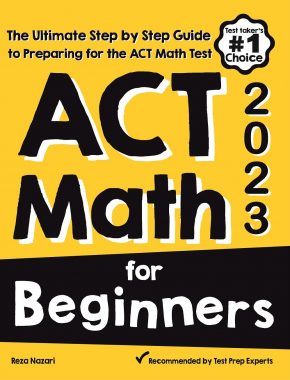
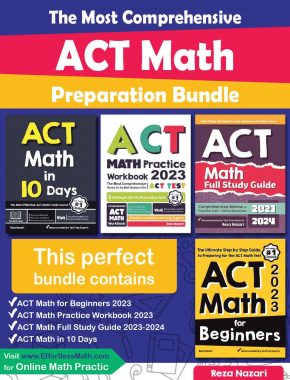
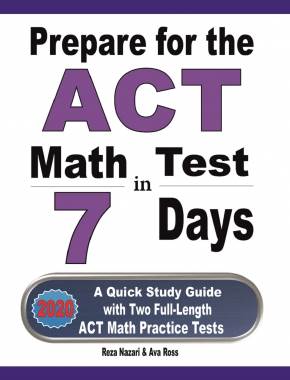
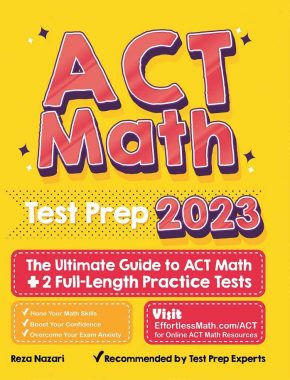
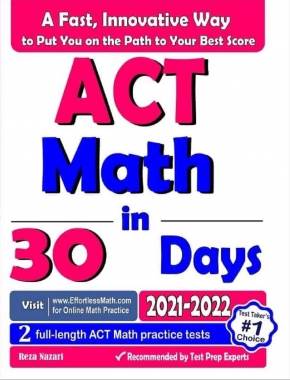
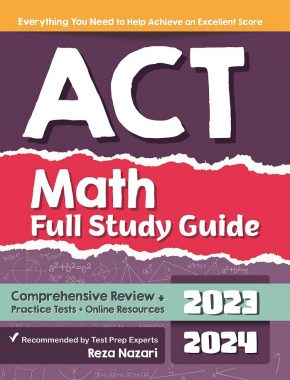
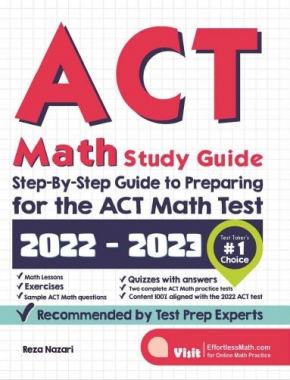
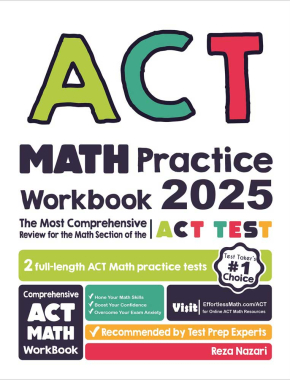
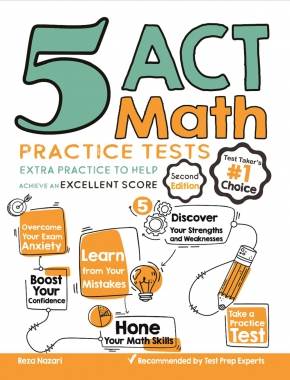
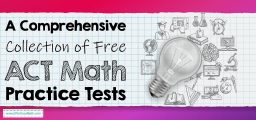
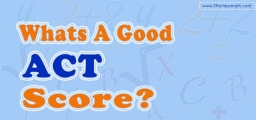
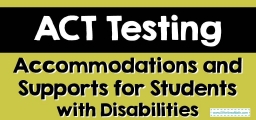


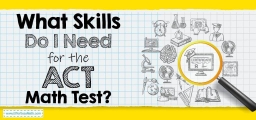
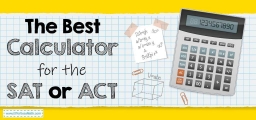
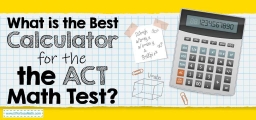
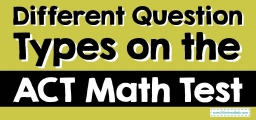

What people say about "What Kind of Math Is on the ACT Test? - Effortless Math: We Help Students Learn to LOVE Mathematics"?
No one replied yet.